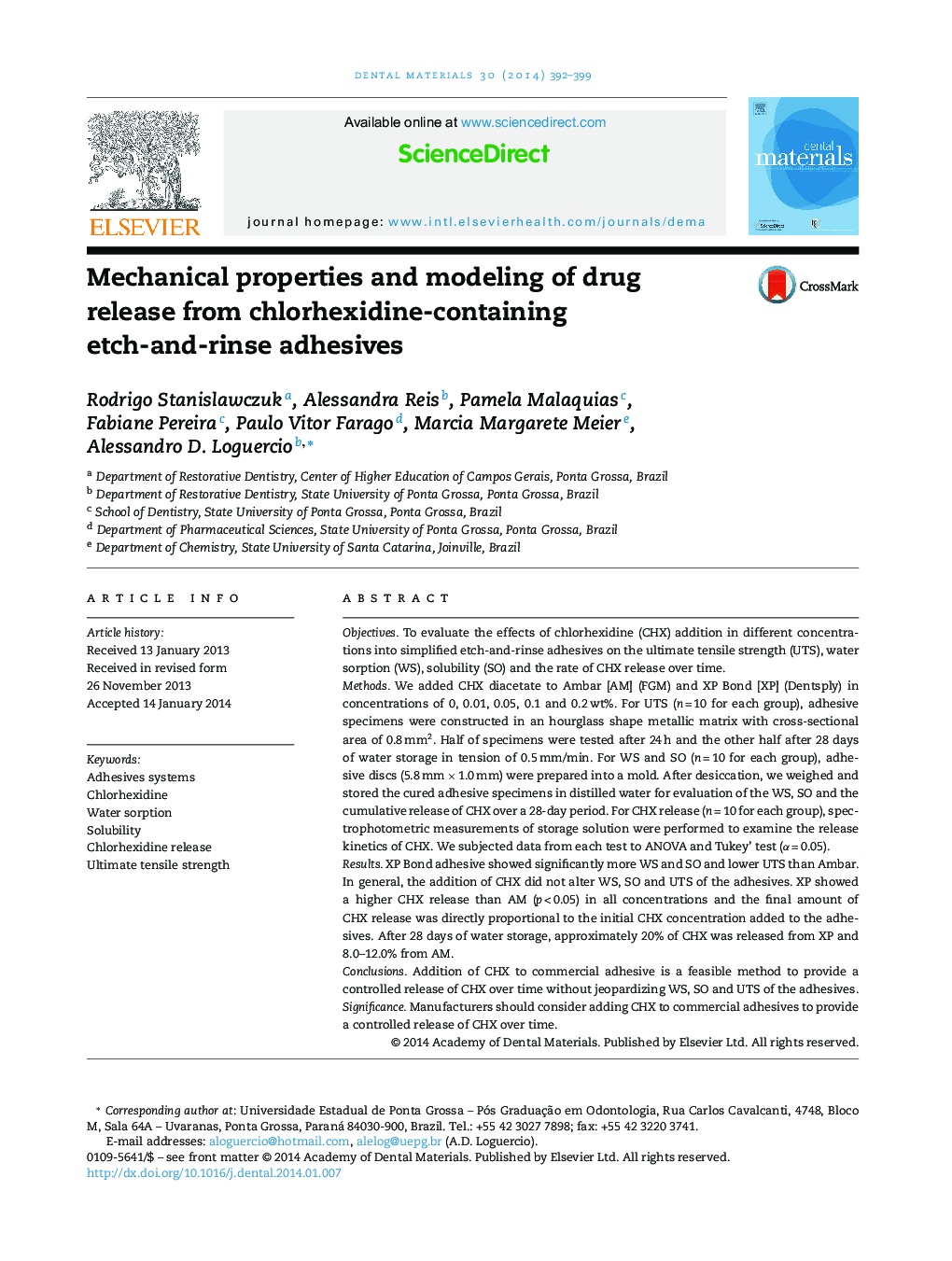| کد مقاله | کد نشریه | سال انتشار | مقاله انگلیسی | نسخه تمام متن |
|---|---|---|---|---|
| 1421112 | 986394 | 2014 | 8 صفحه PDF | دانلود رایگان |
ObjectivesTo evaluate the effects of chlorhexidine (CHX) addition in different concentrations into simplified etch-and-rinse adhesives on the ultimate tensile strength (UTS), water sorption (WS), solubility (SO) and the rate of CHX release over time.MethodsWe added CHX diacetate to Ambar [AM] (FGM) and XP Bond [XP] (Dentsply) in concentrations of 0, 0.01, 0.05, 0.1 and 0.2 wt%. For UTS (n = 10 for each group), adhesive specimens were constructed in an hourglass shape metallic matrix with cross-sectional area of 0.8 mm2. Half of specimens were tested after 24 h and the other half after 28 days of water storage in tension of 0.5 mm/min. For WS and SO (n = 10 for each group), adhesive discs (5.8 mm × 1.0 mm) were prepared into a mold. After desiccation, we weighed and stored the cured adhesive specimens in distilled water for evaluation of the WS, SO and the cumulative release of CHX over a 28-day period. For CHX release (n = 10 for each group), spectrophotometric measurements of storage solution were performed to examine the release kinetics of CHX. We subjected data from each test to ANOVA and Tukey’ test (α = 0.05).ResultsXP Bond adhesive showed significantly more WS and SO and lower UTS than Ambar. In general, the addition of CHX did not alter WS, SO and UTS of the adhesives. XP showed a higher CHX release than AM (p < 0.05) in all concentrations and the final amount of CHX release was directly proportional to the initial CHX concentration added to the adhesives. After 28 days of water storage, approximately 20% of CHX was released from XP and 8.0–12.0% from AM.ConclusionsAddition of CHX to commercial adhesive is a feasible method to provide a controlled release of CHX over time without jeopardizing WS, SO and UTS of the adhesives.SignificanceManufacturers should consider adding CHX to commercial adhesives to provide a controlled release of CHX over time.
Journal: Dental Materials - Volume 30, Issue 4, April 2014, Pages 392–399
